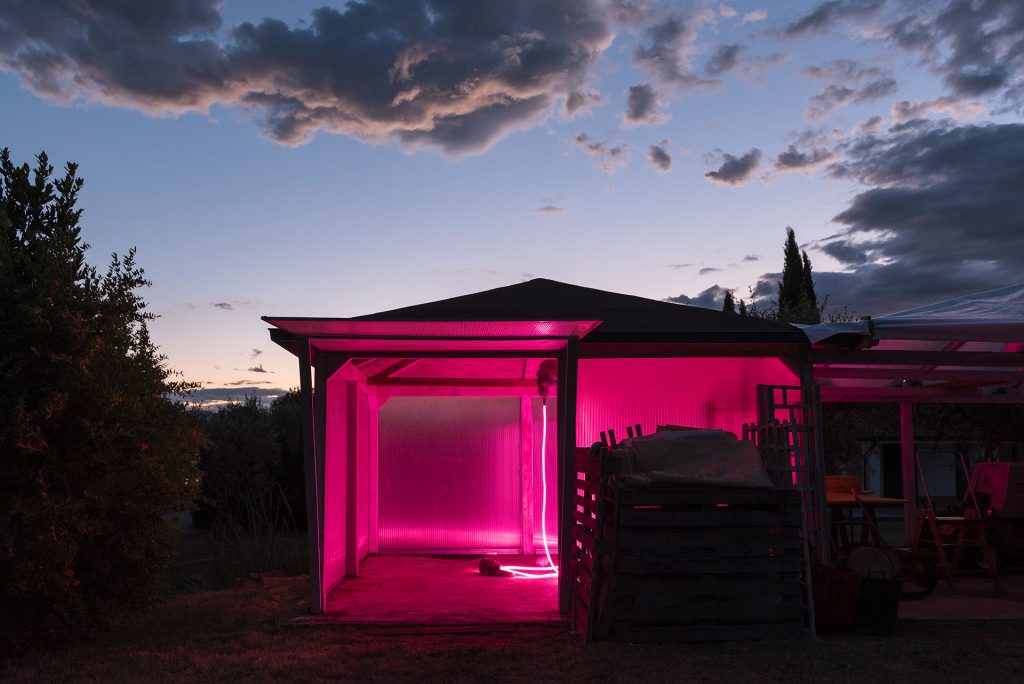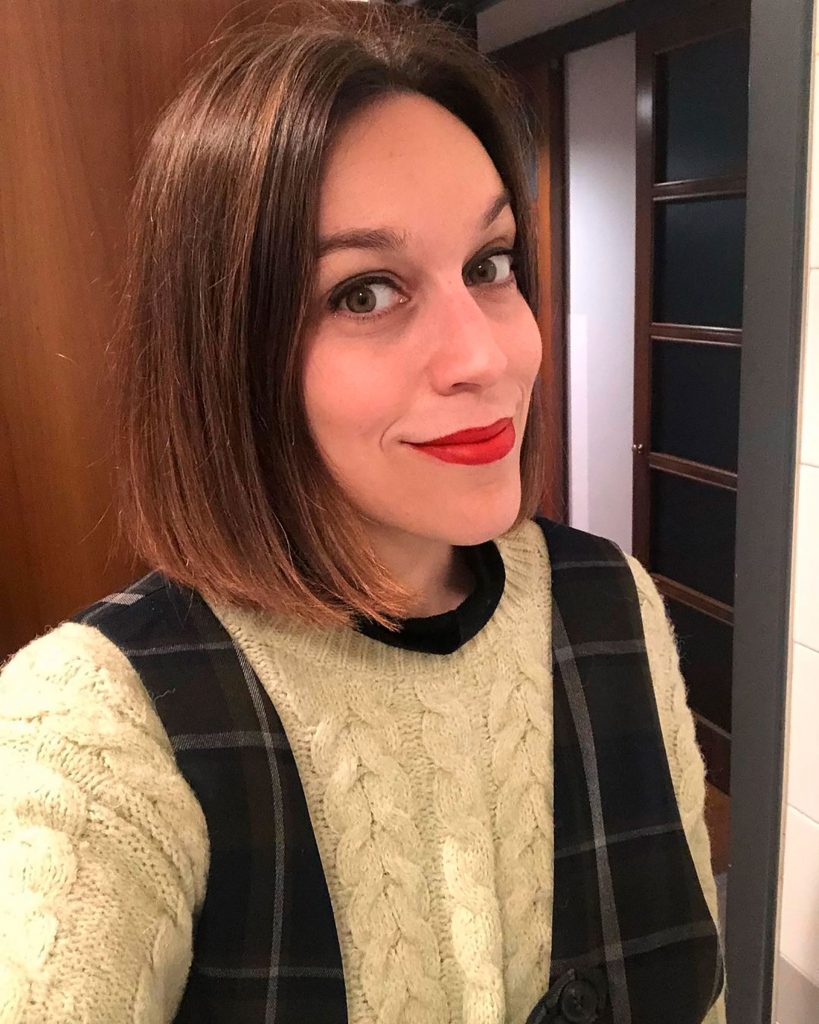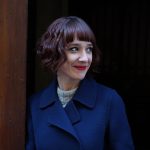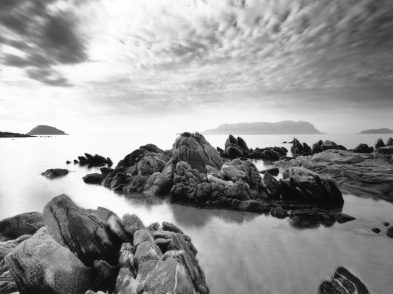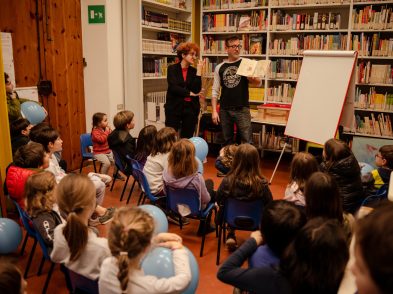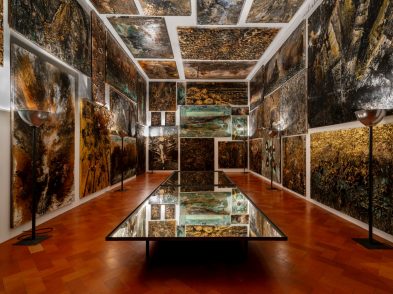With L’Eredità delle Donne (October 21-23) bringing numerous female-focused events to the city, the festival that celebrates the contribution and legacy of women throughout Florentine society and culture, we speak with several women about their various cultural endeavours.
Forte Academy
Florence Forte is behind the non-profit organization titled Forte Academy that seeks to challenge the canon. Working with Skye Shirley for their recent Women Latinists programme, we spoke with Florence and Skye about the organization’s origins and aims.
What brought you to create Forte Academy?
Florence: Inspired by the classical world and my time in Florence after university, I founded Forte Academy as a vehicle for making classical study-abroad opportunities in Florence more accessible for students of all ages and backgrounds. The vision was for Grand Tour-style cultural and educational experiences, without the elitism. Five years on, we now offer interdisciplinary courses across Latin, Classical and Italian Literature, Art, History and Renaissance Culture, with a strong focus on the afterlife of antiquity. As an academy, we enjoy the intellectual freedom to challenge the ways in which these subjects are commonly taught in schools and universities. The goal is always to have fun, share the joys of ancient and modern Italy, and promote independent thinking!
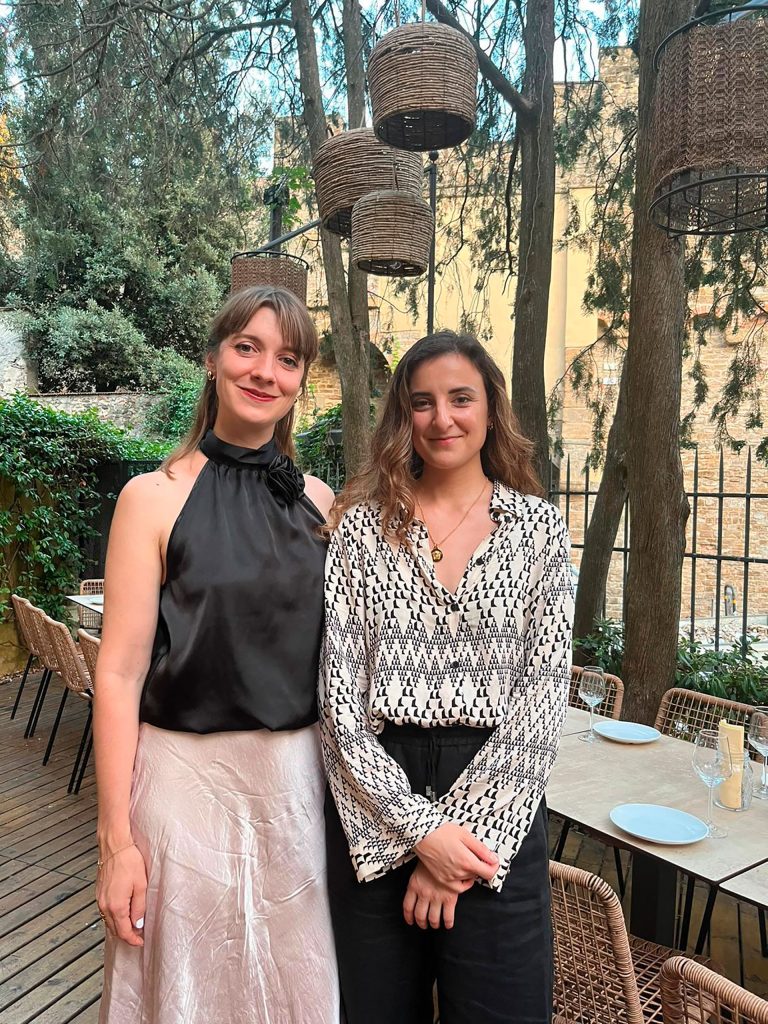
Why focus on women Latinists in this course?
Skye: First off, not enough people ask the question Why focus on male Latinists? in other courses. The standard experience is for people to go through many years of Latin never having read a single sentence by women and we strive to rectify that.
Florence: I taught Latin in schools for years without seriously questioning the absence of women’s writing. There’s a persistent myth in textbooks and in scholarship that barriers to education and professional life prevented women from learning Latin or making an impact. In fact, women’s writing in Latin exists despite such barriers and yet it rarely makes its way onto Latin curricula today.
What were the main themes addressed? Why was it important for you to focus on them?
Florence: We spent each morning in our salon reading Latin (from antiquity up to the early modern period) grouped thematically around key sites of cultural production for women, for example, living rooms, cemeteries, convents, spinning rooms and gardens. We wanted to celebrate women’s Latin in spaces that have not always been recognized as “intellectual” in order to question what counts as an intellectual space, both historically and today.
Skye: We wanted to challenge the idea, on multiple levels, that women who are worth celebrating are those who somehow persisted enough (or were lucky enough) to hack their way into political leadership roles or university positions, for instance. There was a lot of intellectual discussion going on and cultural breakthroughs taking place in all-women spaces too, such as salons, living rooms, convents, gardens and elsewhere. This course is about reclaiming the history, or the herstory, of intellectual spaces where women have made some of their greatest contributions.
Tina the doll is a regular feature on your Instagram feed. Tell us about her.
Florence: Inspired by #ArtActivistBarbie (@Barbiereports) on Twitter, Tina joined Forte Academy in 2021 as head of creative activism. Tina’s role is to challenge the canon by raising awareness of how gender, race and class biases have shaped what is considered great art and literature today. She also enjoys shedding light on lesser-known artists and exploring how stories are told through artwork, by whom and what we can learn from this. She does this largely through mini placards and making memes that prompt philosophical engagement from the viewer. The team has expanded and now includes Nu, Skye’s Activist Barbie, in honour of another source of mutual inspiration for us: the Elena Ferrante novels.
Tell us about your upcoming courses.
Florence: This autumn, Forte Academy is running two online courses: GCSE Latin for Beginners and Radical Renaissance Writers. We will also be offering spring editions of Classics Abroad and Women Latinists in Florence in April 2023. Anyone interested should sign up to our monthly MOON Letter or join a waitlist to receive a reminder when applications open.
The Curly Flower
Creator of The Curly Flower, her personal brand and editorial space, as well as the fashion magazine Fashion On The Beat, Giulia Baldini was born and raised in Florence to a Tuscan father and Afro-Brazilian mother, and now works as a writer, journalist and activist in New York.
What made you create your brands?
I published a book titled Fashion On The Beat detailing my experience as an international student in college in New York and from this book my now-international company was born. The Curly Flower started as a blog created as a journalistic assignment in college. After the semester, I was trying to jump into the workplace and so decided to elevate this blog and shift the focus to my anecdotes as an international Black girl from Florence who goes to New York and writes about her transition to a more cosmopolitan Giulia: Renaissance Giulia! I saw an interest from my American audiences in particular in this aspect of being Black, of African descent, but also Italian in a place like the United States where there are so many labels and categories you can fall under. I came across this concept of intersectionality that was something that was always very innate in me, but I was never able to voice or find the exact words. So, it was through the English language that my experiences felt more communal, in a place like New York where there’s such a plethora of heritages and ethnicities.
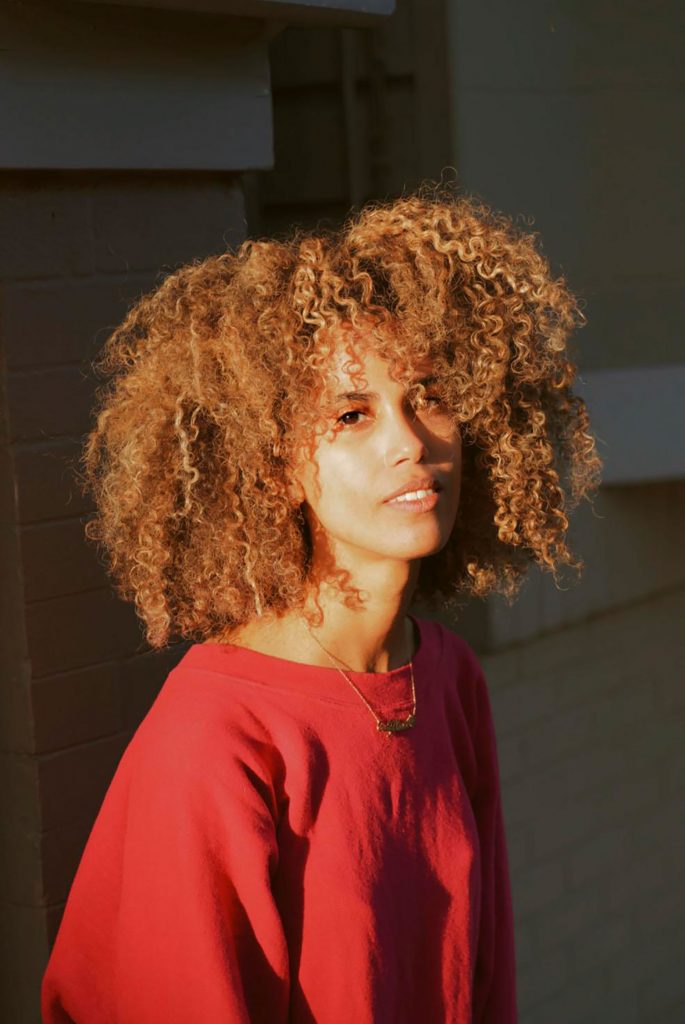
Tell us about the title Fashion on the Beat.
It came as a beat! The full name is actually Fashion on the Beat: The Melodies and Rhythms in Fashion Journalism because I’m also interested in music. When I went to the US, I came across genres I’d never really listened to, like hip-hop, rap, trap and soca. Through music as an outlet, I was able to recognize, Oh, I’m welcomed in this space. Producers add their own “signatures” in music, and at the time when I created the space in 2019, a lot of producers tended to say their name and then “on the beat”. Seeing as I was focusing on fashion, it made sense!
How did your book lead to founding a company?
I published Fashion on the Beat in 2020, and then the pandemic hit. I was stuck in the US because of the travel bans, and during that year it was very difficult to get work and, unfortunately, I was laid off. I felt very beaten down and couldn’t do any of the things that I had in mind to promote my book. I did a lot of internships and freelanced in fashion and media. I was also studying sneaker media culture and going to grad school to study African and African-American studies, with modules on African, Latin and Brazilian media and journalism. Right now, I’m wrapping up this academic journey at Lehman College (CUNY), which has been giving me intellectual solace, motivation and richer insights in regards to the myriad of notions and discussions that come from the African diaspora. Last year, I started writing for an Italian language magazine based in New York, La Voce di New York, covering events, fashion, art and design. During that time, I realized I wanted to elevate Fashion on the Beat as I was witnessing and experiencing a lot of the difficulties in getting published, given that I was seeking other outlets, observing stigma in the face of being an immigrant and with my visa, etc. I made the decision that if I’m not going to get the space to write, I’ll make the space to give voice to others.
What do you focus on?
Our writers are from all over. We look at themes like sustainability, size inclusion, the LGBTQ+ community, and I’ve also reflected on my intersectional vision of self. We have created a safe space for contributors who perhaps don’t have academic experience in journalism, but who are excellent writers. Because of my experiences, I wanted to be specific when it comes to our audience and content: we mainly feature people coming from minorities. We also have an active mentorship programme and we have people involved from all over and the garden of curls space is our smaller section dedicated to holism, and this concept of “curling” (taking inspiration from my hair!), meaning you’re always evolving. We seek to create a socially sustainable space where we can grow from each other but also be vertically rising. It’s a space about lifting and learning about the kaleidoscope of humanity.
C. F. Contemporary Fire
A quiet spot in the Cerreto Guidi countryside is the surprising site for contemporary arts with residencies and exhibitions curated by Caterina Fondelli. The Tuscan creator of the artistic space publishes in Italian and English, sharing her passion for contemporary arts and driving a programme to promote the creations of others.
Why did you establish C.F. Contemporary Fire?
I’ve always been devoted to art and my studies were focused on that field too. Over the last four years, I decided to dedicate my interests and career to contemporary art, taking a Master’s degree in Contemporary Art Markets from NABA, in Milan. It was a gradual path that led me to create C.F. Contemporary Fire, a programme of exhibitions and residencies that are currently based at my family home in the Tuscan countryside. It was a journey of experiences, of working and learning how to develop a project from its beginnings through to installation, and all that follows. While my project is still a work-in-progress, I felt that it was time to share my own vision and contribute to the arts.
What do you strive to achieve through the artist residencies held in Cerreto Guidi? In what way is it a unique space for exhibiting artworks and what do artists and viewers bring away from the experience?
Making my own home a cultural hub, the space where I spent my childhood and grew up, has been an idea I’ve nourished for years. The pivotal contribution and trust of many professionals, like the artists participating in the first group exhibition titled Poggio Tempesta, or the graphic designer and photographers involved in the residency periods, make it possible to create a wonderful atmosphere and with the most professional structure possible. I work hard to provide a unique experience for both the artists and visitors. I believe in the power of the venue of my project, with its pros and cons, and this environment has a strong influence on every aspect of the shows, residencies and open studios. It’s intended to be an immersive moment and an opportunity to connect with nature, while simultaneously being held in a familiar context. It’s all based on sharing and dialogue: with me as a curator and manager of the project, with fellow artists, and with this particular corner of the world that surrounds you. It’s a mutual exchange.
How do you view the role of curator and what is it about the work that interests you? What future projects do you have in mind?
In my opinion, a curator is also a mediator, a person who connects people and spaces, and generates strong ties with communities. It’s a person who understands the vision of the artist, studies it and listens to them in a profound way in order to bring new light to their work. I speak a lot with the artists I host in these projects. I don’t want to impose my vision, but the result should reflect our shared points of view: the artist and curator. Future plans include an artist in residency through to mid-October with two online exhibitions resulting from the last two residency periods. I’d also love to host a new in-person exhibition throughout the winter. I’m continuing my own writing and I have a lot of projects in mind. Let’s see what happens!

